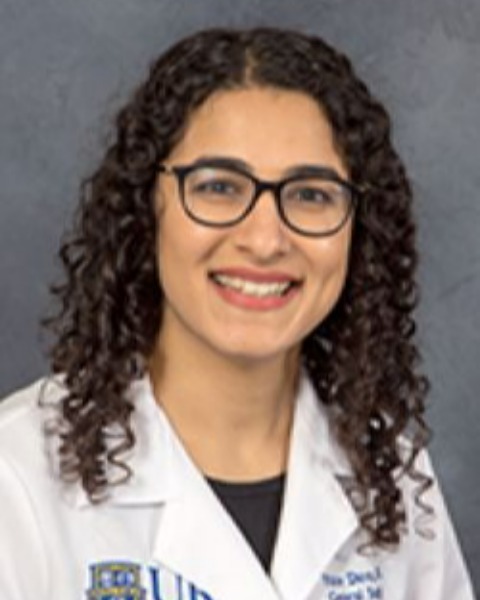Melanoma
non-CME
P45: Dietary fish oil impairs melanoma growth and augments the tumor immune microenvironment in anti-PD-1 treated melanoma
.jpg)
Alexander C. Chacon, MD (he/him/his)
Resident Physician
University of Rochester Medical Center
Rochester, New York, United StatesDisclosure information not submitted.
- SQ
Shuyang S. Qin, PhD
Medical Student Researcher
University of Rochester Medical Center, United StatesDisclosure information not submitted.

Alexa D. Melucci, MD, MS (she/her/hers)
Resident
University of Rochester Medical Center
Rochester, New York, United StatesDisclosure(s): No financial relationships to disclose

Katherine Jackson, MD
Surgical Oncology Fellow
St. John's Cancer Institute
Santa Monica, California, United StatesDisclosure(s): No financial relationships to disclose

Nicholas A. Ullman, MD, MSCI
R4 General Surgery Resident
University of Rochester Medical Center
Rochester, New York, United StatesDisclosure information not submitted.

Paul R. Burchard, MD
General Surgery Resident
University of Rochester Medical Center
Rochester, New York, United StatesDisclosure(s): No financial relationships to disclose

Yatee A. Dave, MD (she/her/hers)
Resident Physician
University of Rochester Medical Center
Rochester, New York, United StatesDisclosure(s): No financial relationships to disclose
- RJ
Rachel Jewell, B.S.
Lab Manager
University of Rochester Medical Center, United StatesDisclosure information not submitted.
- BB
Brian Belt, JD
Tumor Immunology Lab
University of Rochester Medical Center, United StatesDisclosure information not submitted.
- WT
William Tabayoyong, MD, PhD
Assistant Professor
University of Rochester Medical Center, United StatesDisclosure information not submitted.

Peter A. Prieto, MD, MPH, FACS, FSSO (he/him/his)
Assistant Professor, Surgical Oncology
University of Rochester Medical Center
Rochester, New York, United StatesDisclosure information not submitted.
Poster Presenter(s)
Author(s)
Methods:
C57-BL/6J mice were injected with YUMM 1.7 melanoma in the flank. Mice were fed control chow (CTL) or omega-3 rich fish oil (FO) chow (30%kcal/kcal) starting day 7. Intraperitoneal αPD1 or IgG2a vehicle were injected q3-4 days starting day 12. To assess the temporal flux of TME immune populations, tumors from mice in analogous experiments were assessed for growth and harvested on day 12, day 22, or day 32. All listed results significant (p < 0.05) by 2-way ANOVA or t-test.
Results:
In multiple models of solo and synchronous heterogenous melanoma (metastatic model with a second melanoma cell line injected in the opposing flank), FO decreased YUMM tumor growth vs. CTL by day 32 ( >21% for all models), both with and without αPD-1. On day 12, FO halved tumor associated macrophage and M2 macrophage content, decreasing TME effector CD4 and CD8 T cells (while increasing CD4 CTLA-4 positivity).
Conversely, by day 22 FO increased M2 macrophages, CD4, and CD8 T cells, with PD-L1+ CD4s and PD1+ CD8s remaining increased at day 32. At all three timepoints, FO increased the percent of TME monocytes and did not change NK cells or neutrophils. There were no differences in food ingested, mouse weight, or water imbibed between groups.
Conclusions:
High dose dietary fish oil impairs murine melanoma growth both with and without αPD-1 ICI, delaying initial macrophage and CD4 / CD8 T-cell appearance in the TME while promoting cytotoxic T cell persistence within tumors. Reduction of myeloid-induced immunosuppression in the TME provides an avenue by which fish oil may address one of the common immunotherapy resistance mechanisms. Dietary fish oil may represent a cost-effective adjunct or alternative to αPD-1 immunotherapy in melanoma; further study in humans is warranted.
Learning Objectives:
- 1) Explain the relationship between immune suppression in the tumor microenvironment and immune checkpoint inhibition resistance in melanoma treatment
- 2) Describe the temporal flux of immune populations in the melanoma tumor microenvironment
- 3) List the immune populations altered by dietary fish oil in the melanoma tumor microenvironment in a translational model of melanoma
